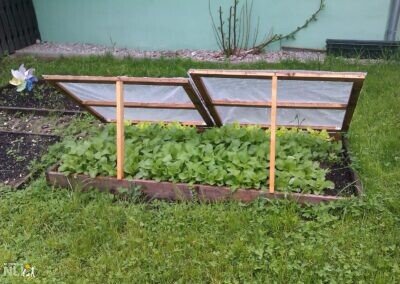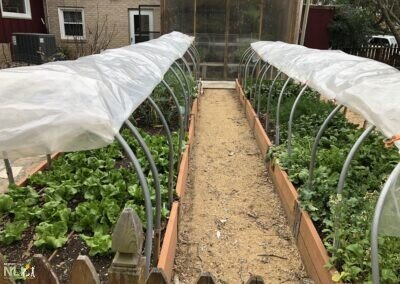Extending Seasons
A cold frame is simply a box set on the ground, topped with framed polycarbonate plastic sheeting, greenhouse film, or sometimes glass, usually hinged on the north-facing edge (in the northern hemisphere). Building a cold frame is a great way to extend the growing season, allowing earlier seed germination and protection of plants from early frost well into fall and winter. In southern latitudes, some edibles – such as greens and herbs – may continue growing throughout the winter with the benefit of cold frame protection.
Setting:
Garden or outdoor area along a building or fence where plants can be grown
Focus:
Gardening
Curricular Areas:
- Health and physical development: motor skills, healthy eating
- Approaches to learning: pondering, processing
- Cognitive development: scientific thinking (observation, inquiry)
Suggestions:
- Decide with the children the best location for a cold frame. Ideally, the location will be south-facing to collect the warmth of the sun. Consider water and soil requirements: select an area with adequate drainage and some protection from the wind. Locating a frame near a wall or building adds additional insulation and protection from the elements.
- Work with the children to prepare the soil. The area of prepared soil should be the size of the cold frame. Remove any grass or other type of ground cover. Loosen the soil and remove any rocks or debris. Add some compost and mix into the soil.
- Construct a frame around the prepared soil, using bricks, wood, and/or bales of straw. If possible, make the back of the frame about twice as high as the front so the lid slopes to a favorable angle for capturing sunlight. The entire growing area should be tall enough to accommodate growing plants.
- Make a cover or lid for your cold frame by stretching and securing clear plastic sheeting across the frame of an old window screen.
- Plant seeds or seedlings in the cold frame. Lettuce, spinach, arugula, broccoli, and herbs work well. Water the seeds or seedlings, and place the lid over the frame.
- Keep the soil moist and observe the plants over time.
Engaging Parents:
- Encourage children to show the cold frame to their parents and talk about how it helps the plants to grow.
- Once the plants are ready to harvest, send them home with children. Encourage children to share the healthy foods they helped to grow.
Materials:
- Rake or digging tool to prepare the soil
- Compost
- Materials for constructing a frame (bricks, wood, and/or bales of straw)
- Large piece of clear greenhouse film (woven or solid) for a hoop design or solid sheets of clear polycarbonate for a box design
- Frame of an old window screen
- Seeds or seedlings



